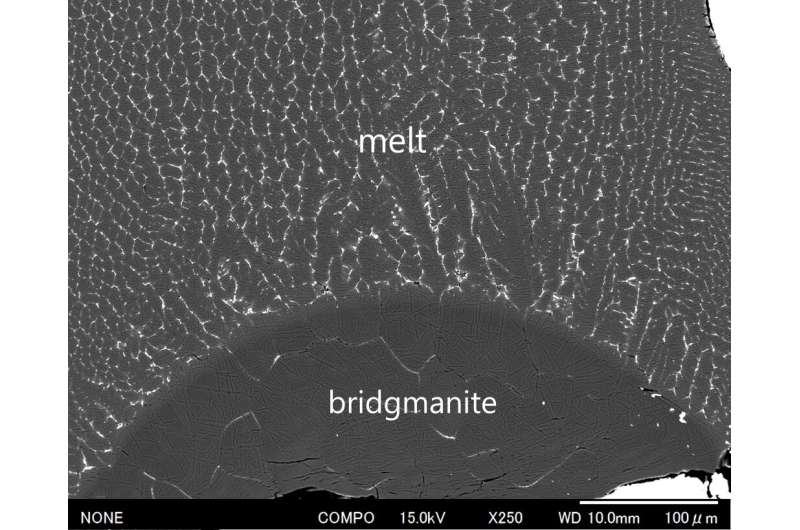This article has been reviewed according to Science X's editorial process and policies. Editors have highlighted the following attributes while ensuring the content's credibility:
fact-checked
peer-reviewed publication
proofread
Experimental constraints on the oxidation state of early magma on the Earth

The link between a planetary interior and its surface is a key to understanding the formation process of the surface environment of the planet.
The distribution of ferrous (Fe2+) and ferric (Fe3+) iron in the mantle of rocky planets controls the oxidation state of the mantle and influences volcanic gas composition and the storage capacity of volatiles in the mantle, including life-essential elements, such as hydrogen and carbon. Thus, understanding the distribution of Fe2+ and Fe3+ in the mantle just after this formation provides key insights into the surface environment before the rise of life and the origin of habitable planets. The research is published in the journal Earth and Planetary Science Letters.
In a previous study published in Nature Geoscience, researchers showed that the Earth's magma ocean was more enriched in Fe3+ than the present upper mantle, and therefore, highly oxidizing. How was the upper mantle's oxidation state reduced to the current state? To answer this question, some of the same researchers examined the possibility of the incorporation of Fe3+ into the lower mantle during the crystallization of the magma ocean.
The results show that crystallization of bridgmanite, the most dominant lower mantle mineral, does not preferentially incorporate Fe3+ compared to coexisting magma. This suggests that the early Earth's upper mantle was also highly oxidized if the Earth's magma ocean was rich in Fe3+. The atmosphere formed by the degassing of volatiles from such a highly oxidizing mantle would have been rich in CO2 and SO2, thereby forming a Venus-like surface environment.
Because the magma ocean crystallization process cannot reduce the upper mantle's oxidation state, the authors have proposed the reduction of the upper mantle by metallic iron contained in late-accreting materials after the formation of the Earth. Indeed, the amount of metallic iron delivered by late accreting materials constrained by the abundance of highly siderophile (iron-loving) elements in the Earth's mantle is comparable to that required to reduce the upper mantle's oxidation state to the present. Further geological constraints on the oxidation state of the mantle are necessary to test this hypothesis.
More information: Hideharu Kuwahara et al, Partitioning of Fe2+ and Fe3+ between bridgmanite and silicate melt: Implications for redox evolution of the Earth's mantle, Earth and Planetary Science Letters (2023). DOI: 10.1016/j.epsl.2023.118197
Journal information: Earth and Planetary Science Letters , Nature Geoscience
Provided by Ehime University




















